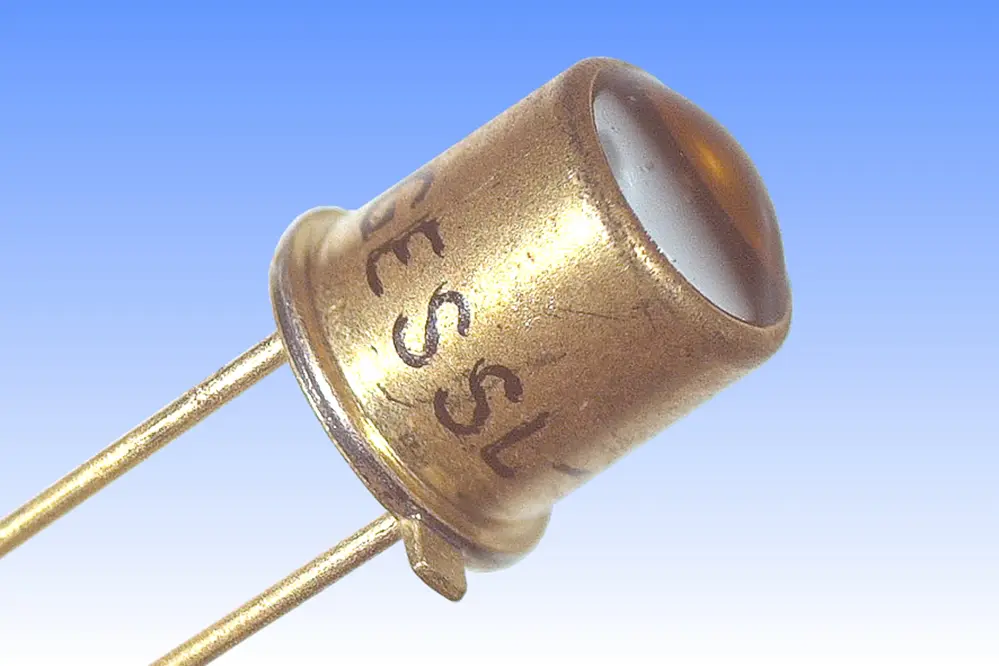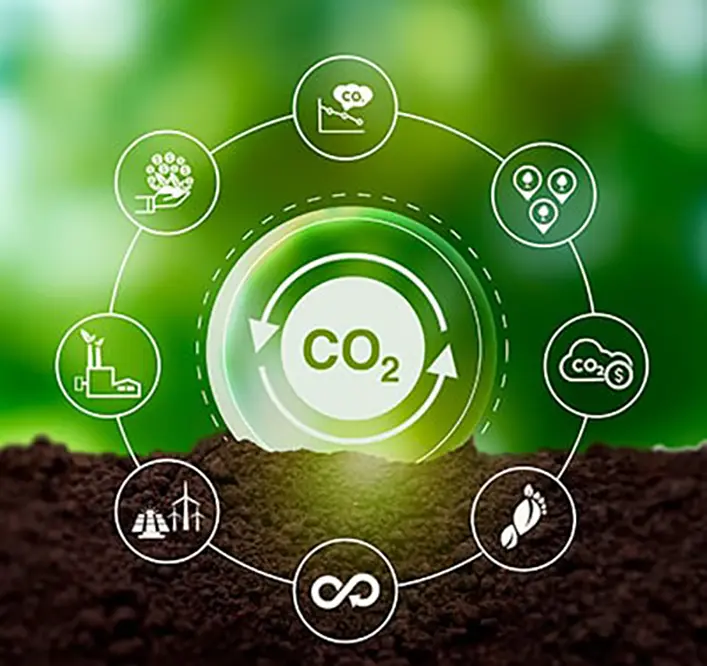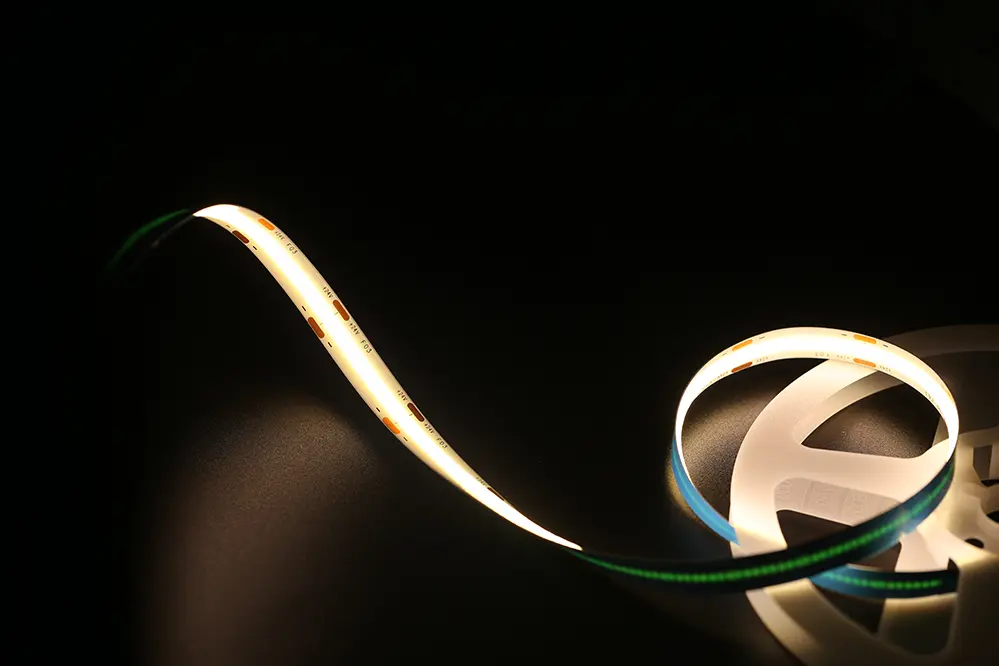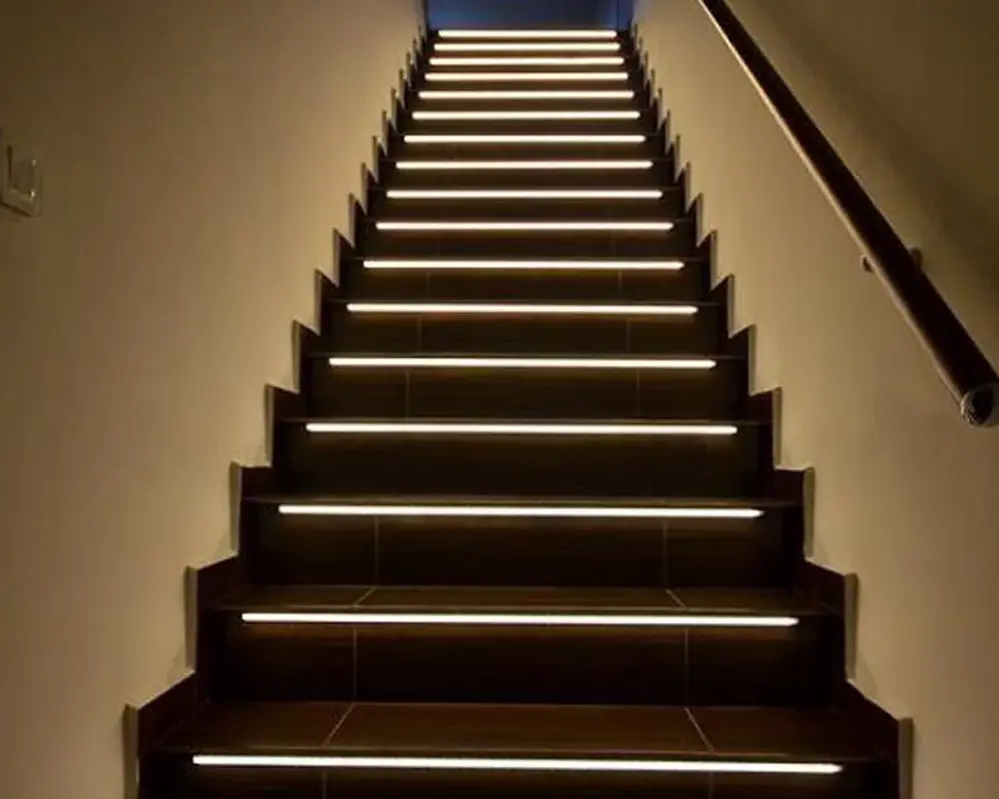Navigating the evolving landscape of lighting technology, we stand at a pivotal junction where the shift towards more sustainable solutions is not just a preference but a necessity. With the increasing awareness of our environmental footprint, the quest for eco-friendly lighting options brings us to the forefront of LED innovation, mainly LED strips. These slender beacons of light are not only transforming our illuminated spaces but are also playing a crucial role in shaping a greener future.
LED strip lights are a game-changer in the realm of eco-friendly lighting, offering unmatched energy efficiency, longevity, and safety. Their low heat emission and minimal use of hazardous substances make them an ideal choice for both indoor and outdoor applications, significantly reducing the environmental impact associated with traditional lighting options.
Dive deeper into the world of LED strips with us, where we unravel the layers of their environmental impact and showcase how these luminous strips are not just lighting up our spaces but also paving the way for a sustainable future. With insights into their lifecycle, from manufacturing to disposal, and a look at the latest green innovations, this comprehensive guide is your portal to understanding why LED strips are the ultimate solution for eco-conscious lighting enthusiasts.
The Environmental Benefits of LED Strips
The advent of LED strip lighting has ushered in a new era of environmental stewardship within the realm of illumination. These slender bands of light-emitting diodes (LEDs) have become synonymous with both aesthetic appeal and ecological responsibility. Below, we delve deeper into the multifaceted environmental benefits that LED strips offer.
Unmatched Energy Efficiency
At the heart of LED strip lighting’s environmental accolades is its unparalleled energy efficiency. LED technology represents a quantum leap from traditional lighting solutions such as incandescent and halogen bulbs. Where standard bulbs squander a significant portion of energy as heat, LED strips stand out for their ability to convert a higher ratio of electricity directly into light. This results in a dramatic reduction in energy consumption—LED strips can operate on a mere fraction of the power required by their incandescent counterparts.
The implications of this heightened efficiency extend far beyond the confines of an electricity bill. By demanding less from our power grids, LED strips contribute to a large-scale decrease in the burning of fossil fuels, thereby curbing the release of carbon dioxide and other greenhouse gases into the atmosphere. The adoption of LED lighting is a tangible step toward mitigating the global challenge of climate change, offering a brighter future in both a literal and metaphorical sense.
Longevity: A Path to Less Waste
Durability is another cornerstone of LED strip lighting’s environmental advantage. LED strips can illuminate for tens of thousands of hours before dimming—a stark contrast to the temporary lifespan of traditional bulbs. This extended longevity means fewer replacements, which in turn translates to less waste.
The environmental impact of this increased lifespan cannot be overstated. By diminishing the need for frequent manufacturing of new bulbs, LED technology conserves the raw materials and energy typically expended in production processes. Furthermore, the reduction in waste helps alleviate the burden on landfill sites, where discarded bulbs can contribute to soil and water contamination. Thus, the long-lasting nature of LED strips encapsulates the essence of sustainable living, marrying convenience with conservation.
Safety and Low Heat Emission
Safety is an often overlooked yet crucial aspect of LED strip lighting’s environmental benefits. Traditional lighting solutions, especially incandescent bulbs, operate at high temperatures, posing risks of burns and contributing to heat buildup in enclosed spaces. LED strips, by contrast, remain cool to the touch even after hours of operation. This inherent safety feature makes LED strips an ideal choice for a wide array of applications, from home decor to commercial displays.
The low heat emission of LED strips has a secondary benefit: energy conservation. In environments where air conditioning is a necessity, traditional high-heat bulbs can exacerbate the demand for cooling, leading to increased energy consumption. LED strips, in their remarkable efficiency, sidestep this issue, offering luminance without the thermal overhead. This not only enhances safety but also dovetails with the broader goal of energy conservation, further cementing LED strips as a beacon of environmental sustainability.
Addressing Environmental Concerns
While the shift towards LED lighting heralds numerous environmental benefits, it is crucial to navigate this transition with a clear understanding of the associated environmental challenges. In this section, we delve into the less-discussed aspects of LED technology, from the use of hazardous substances to the nuances of electronic waste and the carbon footprint entailed in the lifecycle of LED products.
The Problem with Hazardous Substances
LED lights, celebrated for their efficiency and longevity, are not entirely devoid of environmental concerns. A critical examination reveals that the manufacturing process of LEDs occasionally involves the use of hazardous materials. Although LEDs do not contain mercury, a toxic element present in compact fluorescent lamps (CFLs), they can include other substances that require careful handling and disposal. Gallium arsenide, a compound used in some LEDs, is one such example.
The presence of these materials necessitates stringent manufacturing standards and responsible disposal practices to mitigate potential environmental harm. It underscores the importance of advancing manufacturing technologies to minimize further or eliminate the use of such substances in LED production. By prioritizing eco-friendly materials and innovative production techniques, the LED industry can enhance its sustainability profile and reassure consumers about the environmental integrity of their lighting choices.
Electronic Waste and LED Disposal Challenges
The proliferation of LED lighting, while beneficial in reducing operational energy use, introduces challenges in electronic waste management. As LED fixtures and bulbs reach the end of their functional life, the question of their disposal comes to the fore. Unlike traditional incandescent bulbs, LEDs are an amalgamation of circuitry and electronic components, categorizing them as electronic waste (e-waste).
The proper disposal and recycling of e-waste are critical to preventing potential environmental contamination and reclaiming valuable materials. However, the infrastructure for e-waste recycling is still evolving, with disparities in capabilities and regulations across different regions. This scenario calls for a concerted effort from manufacturers, consumers, and policymakers to establish robust e-waste management systems that facilitate the efficient recycling of LED products, thereby turning a potential environmental challenge into an opportunity for sustainable materials management.
The Real Carbon Footprint of LEDs
Acknowledging the energy efficiency of LED lighting invites a deeper inquiry into its overall environmental impact, particularly its carbon footprint. While LEDs consume significantly less energy during operation, leading to lower greenhouse gas emissions, the manufacturing process is energy-intensive. The production of LEDs involves sophisticated semiconductor technology, which requires substantial energy inputs, thereby contributing to the carbon footprint of these devices.
To fully appreciate and mitigate the environmental impact of LED lighting, it is essential to adopt a lifecycle perspective. This approach encompasses not only the operational energy efficiency of LEDs but also the energy consumed in their production and eventual disposal. Innovations in manufacturing efficiency, renewable energy integration, and recycling can collectively reduce the carbon footprint of LED lighting, aligning it more closely with the principles of sustainability.
Comprehensive Lifecycle Analysis
Delving into the lifecycle of LED strips from their inception in the manufacturing phase to their ultimate disposal or recycling provides a holistic view of their environmental footprint. This comprehensive analysis is pivotal for uncovering the multifaceted impacts of LED technology and for pinpointing opportunities for enhancement in sustainability practices.
From Manufacturing to End-of-Life
The journey of an LED strip begins in the manufacturing phase, where raw materials are transformed into the efficient lighting solutions we utilize. This process, while innovative, has its environmental implications. The production of LED strips involves the extraction and processing of various materials, including metals and semiconductors, which require significant energy inputs and can result in the emission of greenhouse gases.
Furthermore, the assembly of LED strips entails sophisticated manufacturing techniques, often reliant on precision engineering and potentially involving chemical processes. These factors combined underscore the necessity for continuous improvements in manufacturing efficiency and the adoption of cleaner, more sustainable production methods.
As LED strips illuminate our spaces, they consume far less energy than traditional lighting solutions, thus reducing their operational environmental impact. However, the end-of-life phase presents its own set of challenges. The disposal of LED strips, if not properly managed, can contribute to electronic waste, posing potential risks to the environment. This highlights the importance of developing effective recycling and disposal strategies to ensure that LED strips contribute positively to environmental sustainability throughout their entire lifecycle.
Recycling and Sustainability Initiatives
The critical role of recycling in minimizing the environmental impact of LED strips cannot be overstated. As these lighting solutions reach the end of their functional life, recycling them becomes imperative to prevent electronic waste from accumulating in landfills, where it can leach harmful substances into the soil and waterways.
In response to this challenge, various recycling and sustainability initiatives have emerged, aiming to reclaim valuable materials from spent LED strips and repurpose them for new uses. These initiatives not only alleviate the burden on natural resources by reducing the demand for raw materials but also mitigate the environmental hazards associated with improper disposal of electronic waste.
To bolster these efforts, manufacturers and stakeholders in the LED industry are increasingly embracing the principles of the circular economy, where products are designed with their eventual recycling in mind. This approach involves using recyclable materials in the production of LED strips, preparing them for easy disassembly, and establishing efficient recycling processes to recover and reuse components.
Furthermore, legislative measures and industry standards are being implemented to encourage the recycling of LEDs and promote sustainability across the lighting industry. These measures include mandating the responsible disposal of electronic waste and incentivizing the adoption of green manufacturing practices.
By integrating recycling and sustainability initiatives into the lifecycle of LED strips, we can ensure that these lighting solutions remain at the forefront of environmentally friendly technology. Through collaborative efforts between manufacturers, consumers, and policymakers, the LED industry can continue to innovate while upholding its commitment to environmental stewardship.
Eco-Friendly Practices with LED Usage
In the realm of LED lighting, the journey towards sustainability extends beyond mere energy savings. It encompasses a broader spectrum of eco-friendly practices, from the initial selection of products to their eventual recycling or disposal. By embracing these practices, we not only enhance our immediate surroundings but also contribute to the well-being of our planet.
Choosing Sustainable LED Products
The quest for sustainability in LED lighting begins with the conscientious selection of products. In an era where the market is flooded with myriad options, discerning consumers and businesses are increasingly leaning towards LEDs that are not just efficient and durable but also crafted with the environment in mind. This entails looking beyond the lumens and watts to understand the ecological footprint of the products we choose.
Sustainable LED products are those that minimize the use of hazardous materials, optimize energy consumption, and are designed for longevity. Manufacturers who prioritize eco-friendly designs employ recyclable materials and strive to reduce packaging waste. Moreover, certifications such as Energy Star or the EU’s Ecolabel can serve as reliable guides for consumers seeking products that meet stringent environmental and energy efficiency criteria.
Recycling and Disposal Best Practices
As LED lights reach the end of their lifespan, the focus shifts to their disposal and the opportunities for recycling. Proper disposal of LED lighting is critical in preventing potentially hazardous materials from causing environmental harm. Many regions have established specific guidelines for the disposal of electronic waste, including LEDs, to ensure that they are handled responsibly.
Recycling is the cornerstone of eco-friendly disposal practices. It involves the meticulous separation and recovery of valuable materials from spent LED lights, which can then be repurposed for new products. This not only conserves resources but also reduces the demand for virgin materials, closing the loop in a circular economy model.
Consumers and businesses can contribute to this cycle by utilizing designated e-waste recycling facilities and participating in take-back programs offered by manufacturers and retailers. By doing so, they ensure that their used LEDs are recycled in an environmentally sound manner, paving the way for a sustainable future.
Breakthroughs in Green LED Technology
The landscape of LED technology is continually evolving, driven by innovations that promise to make LED lighting even more sustainable. Researchers and manufacturers are making significant strides in developing LEDs that are more efficient, have a smaller ecological footprint, and incorporate eco-friendly materials.
Recent breakthroughs include the development of LEDs with higher luminous efficacy, reducing the amount of energy required to produce the same level of brightness. Advances in materials science have led to the creation of LEDs that use less rare and potentially harmful materials, making them more environmentally friendly.
Moreover, the integration of smart technology into LED lighting systems is revolutionizing the way we use light. Smart LEDs can be controlled remotely, programmed to adjust to natural light levels, and optimized for minimal energy use, further enhancing their sustainability.
As we look to the future, these innovations in green LED technology hold the promise of lighting solutions that not only illuminate our spaces but also do so in a way that is in harmony with the environment. Embracing these advances is not just a step towards more efficient lighting but a leap towards a more sustainable world.
The Future of LEDs: A Greener Horizon
As we delve into the future of lighting, LED technology stands at the forefront of a revolution, promising a brighter, more sustainable tomorrow. This section explores the horizon of LED advancements, focusing on eco-friendly production methods, the influence of legislative frameworks, and the pivotal role of consumer awareness in steering the industry towards greener practices.
Innovations in Environmentally Friendly Production
The LED industry is witnessing a transformative shift towards environmentally friendly production processes. Innovations in this sphere are not just about enhancing energy efficiency but also about minimizing the ecological footprint of manufacturing LEDs. Cutting-edge research is leading to the development of LEDs using less toxic materials and more sustainable manufacturing practices, thereby reducing waste and harmful emissions.
Advancements in material science have led to the discovery of new, eco-friendly semiconductors that promise to reduce the reliance on rare earth elements, which are often associated with environmental degradation and ethical concerns related to mining. Furthermore, improvements in manufacturing technologies are enabling the use of renewable energy sources, such as solar and wind power, in LED production facilities, setting a new standard for green manufacturing in the electronics industry.
Legislative Impacts and Global Policies
The trajectory of LED technology is significantly influenced by legislative frameworks and global policies aimed at environmental conservation. Governments worldwide are implementing regulations that mandate energy efficiency and restrict the use of hazardous substances in lighting products. These measures not only ensure that LED products meet high environmental standards but also encourage innovation within the industry to comply with these regulations.
For instance, the European Union’s Restriction of Hazardous Substances (RoHS) directive and the Energy-related Products (ErP) regulation have set benchmarks for the permissible levels of toxic substances in electronic products and the energy efficiency of lighting solutions, respectively. Similarly, initiatives like the Energy Star program in the United States offer certification to lighting products that demonstrate superior energy performance, guiding consumers towards more sustainable choices.
Cultivating Consumer Responsibility and Awareness
An informed and conscientious consumer base also drives the shift towards a more sustainable future with LED lighting. As awareness of environmental issues grows, consumers are increasingly seeking products that align with their values of conservation and sustainability. This demand for eco-friendly lighting solutions encourages manufacturers to innovate and adopt green practices throughout the product lifecycle.
Educational campaigns and transparency initiatives play a crucial role in empowering consumers with the knowledge to make informed choices. By understanding the environmental impact of different lighting options, consumers can drive change through their purchasing decisions, favoring products that are not only energy-efficient but also manufactured responsibly and designed for recyclability.
FAQ's
Q: How do LED strip lights contribute to energy conservation?
A: LED strip lights are renowned for their high energy efficiency, consuming significantly less power compared to traditional lighting options. This not only helps in reducing electricity bills but also plays a vital role in conserving energy, thereby contributing positively to environmental sustainability.
Q: Can LED strip lights be recycled?
A: Yes, LED strip lights can be recycled. They are designed with materials that can be processed and reused, minimizing electronic waste and promoting a sustainable approach to disposing of used lighting products.
Q: Do LED strips emit harmful UV radiation?
A: No, one of the advantages of LED strip lights is that they do not emit ultraviolet (UV) radiation, making them safer for both human health and the environment compared to some traditional lighting sources that can emit harmful levels of UV radiation.
Q: What is the lifespan of an LED strip light compared to traditional bulbs?
A: LED strip lights boast an impressive lifespan, often lasting up to 25 times longer than traditional incandescent bulbs. This extended durability significantly reduces the need for frequent replacements, thereby cutting down on waste and resource consumption.
Q: How do government regulations impact the production and use of LED strip lights?
A: Government regulations and global policies set standards for energy efficiency and environmental safety, encouraging the adoption of green technologies like LED lighting. These regulations ensure that LED products meet specific environmental and energy efficiency criteria, driving innovation and sustainability in the lighting industry.
Q: Are LED strip lights safe to use in any environment?
A: LED strip lights are known for their low heat emission, making them a safe lighting option for various environments. Their cool operation reduces the risk of burns and fire hazards, making them suitable for both residential and commercial settings.
Q: How does the manufacturing process of LED strip lights affect their environmental impact?
A: The manufacturing process of LED strip lights involves energy-intensive production techniques and materials, contributing to their overall carbon footprint. However, ongoing innovations in manufacturing processes aim to reduce this impact by utilizing more sustainable practices and materials.
Q: What role does consumer awareness play in promoting sustainable LED lighting solutions?
A: Consumer awareness is crucial in driving the demand for sustainable LED lighting solutions. Educated consumers are more likely to choose eco-friendly lighting options, influencing manufacturers to prioritize green practices and products that align with environmental values.
Q: Can integrating smart technology with LED strip lights enhance their energy efficiency?
A: Yes, integrating smart technology with LED strip lights can significantly enhance their energy efficiency. Features like remote control, automated brightness adjustment, and motion detection can optimize energy use, further reducing their environmental impact.
Q: What future innovations in LED technology are expected to improve their sustainability?
A: Future innovations in LED technology are expected to focus on improving luminous efficacy, reducing the use of rare and potentially harmful materials, and incorporating smart and energy-efficient features. These advancements will likely lead to even greener and more efficient LED lighting solutions, reinforcing their role in sustainable lighting.
Conclusie
LED strips offer a promising path toward sustainable lighting, with benefits that extend beyond energy efficiency to include safety, longevity, and reduced environmental impact. As we look to the future, continued innovation, responsible practices, and informed consumer choices will be vital in realizing the full ecological potential of LED technology.
In navigating the world of sustainable lighting, LED strips stand out as a beacon of innovation and eco-friendliness. Their remarkable energy efficiency, safety, and longevity not only lighten up our spaces but also do so while conscientiously treading on our precious environment. Amidst the global shift towards greener technologies, LED strip lights emerge as a shining example of how technology and sustainability can harmoniously coexist. As we continue to embrace these advancements, it becomes increasingly clear that making environmentally responsible choices in lighting not only benefits our immediate surroundings but also contributes significantly to the larger goal of global sustainability.
In this landscape of progressive lighting solutions, Unitop, een van China's toonaangevende fabrikanten van LED-strip verlichting en LED neon flex, stands at the forefront, championing the cause of sustainable lighting. With years of expertise and a commitment to quality and innovation, Unitop has been illuminating the path toward a brighter, more sustainable future. Whether you have further questions or specific requirements, our team at Unitop is ready to assist you. We encourage you to reik uit naar ons immediately to explore how our cutting-edge LED solutions can meet your lighting needs while aligning with your environmental values. Together, let’s embark on a journey towards a more sustainable and brilliantly lit future with Unitop’s expert guidance in the LED industry.

Tom is nu de Sales Manager van Unitop (China) Co.. Hij is in de LED Verlichting industrie sinds 2005. Hij is een expert in verkoop & marketing, en fabrieksmanagement. Hij houdt van bodybuilding, en hij is ook een gekke Apple-fan! Hij is een hardwerkende man en houdt ervan te leren en nieuwe dingen te proberen.
Email: tom@unitopledstrip.com WhatsApp: +86-18680307140








Laat een reactie achter
Wil je meedoen aan de discussie?Voel je vrij om bij te dragen!